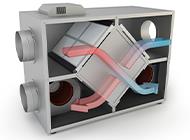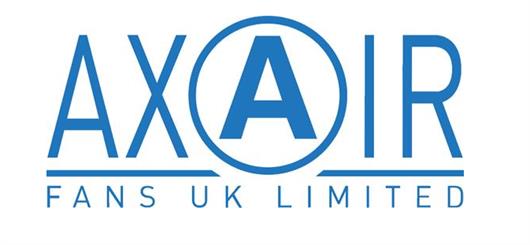 Add My Company
Add My Company
Sign In

Mechanical Ventilation with Heat Recovery (MVHR) is increasingly used for controlled ventilation in new and existing buildings. The tightness of buildings and lack of ventilation leads to problems such as mould and poor air quality, in addition to reduced comfort for occupants. High rise buildings with apartments and flats are a prime example of where MVHR units are used to effectively ventilate each room. Very often we will receive enquiries from domestic users who complain that their units are very noisy or seem ineffective, lots of these people confuse their MVHR with an air conditioner.
We are no experts on finished heat recovery units, but we do work with MVHR manufacturers every day supplying industrial fans for use in these units. The fan is an integral part of these, and most, ventilation systems. We are experts in fans and fan integration so ask us any questions freely via email, or on the live chat, but in this article, we look at the difference between basic and quality MVHR systems.
A Basic MVHR system is the cheaper option and as expected, when compared with high quality systems, they do have a few downfalls. Minimal insulated housing reduces the cost of the units but can lead to heat loss, often cheaper filters are used too which can be ill fitting and allow dust to seep in and build up inside the ductwork, while blocked filters may contribute to poor ventilation disrupting the airflow and adding additional resistance causing an unbalance to the system.
These cheaper systems can often be quite noisy due to the integration of industrial fans producing vibration noise in operation, and poor insulation. Basic systems also tend to struggle in colder winter months and face an unbalance in the temperature distribution and reduced heat recovery. An unbalanced system can provoke excessive de-humidification, resulting in the air becoming too dry. Unfortunately, with cheaper heat recovery systems, where there is need for repairs, it is often the case that the entire system needs replacing.
Higher quality MVHR systems focus on a system that works well in all circumstances. They provide consistent and efficient ventilation with the use of constant volume fans that deliver a consistent airflow at all times regardless of resistance from blocked filters etc, always ensuring a reliable balance of heat removal and recirculation. Better systems will not struggle with seasonal variance as the correct heating components are put in place to prevent any imbalances. A superior quality system is well insulated with minimal noise output, the use of better industrial fans that have noise attenuation and produce less vibration are favourable in both domestic and commercial properties. Good quality systems are permanent fixtures, and parts can be repaired individually making them the more convenient and cost-effective option overall.
Most high-quality systems are Passivhaus certified meaning they are a suitable option for low energy buildings. The Passivhaus institute have set out their Passivhaus standard for new and existing buildings to be net-zero and provide proven approaches to achieving this. Its EnerPHit standards are for retrofitting existing systems in properties.
An MVHR system must reclaim enough heat to outweigh the energy consumption of the integrated fans and other components in the system. Popular industrial fans in most commercial MVHR units are the GDS range of EC forward curved fans from Ecofit. These are ideal for this application, and many other energy hungry units such as air curtains, due to their low energy consumption and built in constant volume electronics within the EC motor.
An important consideration when manufacturing MVHR systems is specific fan power, a parameter that quantifies the energy efficiency of fan air movement systems. A low figure indicates that a fan can deliver a given flow at a required pressure, while using as little electrical energy as possible. Fans have different SFP figures depending on the operating points, so this is not a constant figure and as such manufacturers will calculate the SFP based on their systems. Overall, the SFP should be as low as possible. Learn more about specific fan power here.
With constant demands to meet the latest sustainability targets and rising concerns about poor indoor air quality, it is important to understand what makes an efficient ventilation system and how to determine the best solution.
Certain factors need to be considered to ensure a MVHR system is efficient including the design, which is crucial for ensuring the whole area of the building will be covered. Correct installation is key, so it is advised to use a reputable supplier and installer for the project. Other crucial factors are decent quality ducting, correct placement of the intake terminal to avoid external pollution, and accessibility for maintenance. MVHR filters will also need to be changed in line with maintenance schedules to ensure optimal efficiency, and to further noise attenuate, silencers can also be fitted.
For more information on Mechanical Ventilation with Heat Recovery (MVHR) – Basic & Quality System Differences talk to Axair Fans UK Ltd
Enquire Now
List your company on FindTheNeedle.

